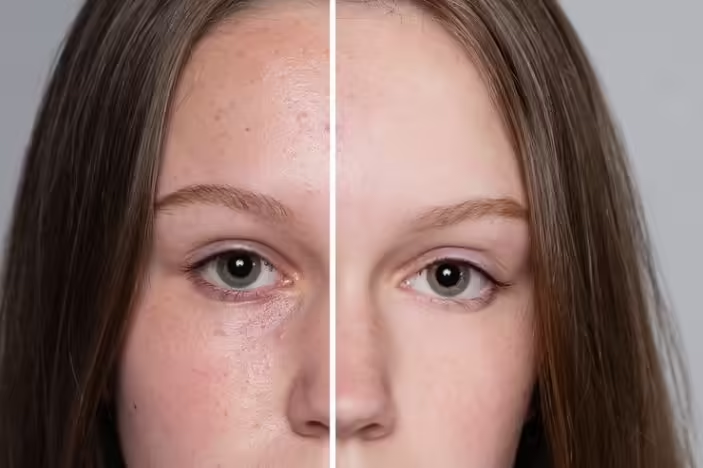Effective Skincare Routine for Dry and Sensitive Tretinoin Users
Tretinoin, a powerful retinoid used to treat acne and improve skin texture, can often cause dryness and peeling, especially for those with sensitive skin. This article provides comprehensive routine suggestions and product recommendations for users experiencing these common side effects, ensuring a balanced approach to maintaining clear, hydrated skin. Tretinoin routine
Who is a Candidate for Using Tretinoin, and What Skin Concerns Can It Address?
Tretinoin is a prescription-strength retinoid, which means it’s only available through a doctor’s recommendation. If you’re considering this treatment, a consultation with a dermatologist is essential. They’ll consider your specific skin type and issues to determine if tretinoin is suitable for you.
What Skin Concerns Can Tretinoin Address?
- Fine Lines and Wrinkles: Tretinoin is well-regarded for its ability to minimize the appearance of fine lines and aging signs.
- Hyperpigmentation: It’s effective for reducing dark spots and discoloration, including melasma.
- Severe Acne: Those dealing with persistent acne, like cystic acne, may find relief with tretinoin.
- Uneven Skin Texture: Using tretinoin can help smooth out skin texture, providing a more even complexion.
Ideal Candidates for Tretinoin
- Resilient Skin Types: Tretinoin works best for individuals who have robust skin with minimal sensitivity.
- People with Indented Scars: If you have deep acne scars, tretinoin might help improve their appearance.
- Adults Over 35: If you’re looking to rectify sun damage or reduce aging signs, tretinoin could be beneficial.
Cautions and Considerations
- Sensitive Skin Issues: If you experience sensitivity or have conditions like eczema or rosacea, tretinoin might not be suitable, as it can further weaken your skin barrier.
- Pregnancy: It’s generally advised to avoid retinoids, including tretinoin, during pregnancy as a precaution.
Always discuss with your healthcare provider to ensure tretinoin aligns with your skincare goals and personal health needs. They can guide you through potential alternatives like over-the-counter retinol, which might offer a gentler approach for those with milder concerns.
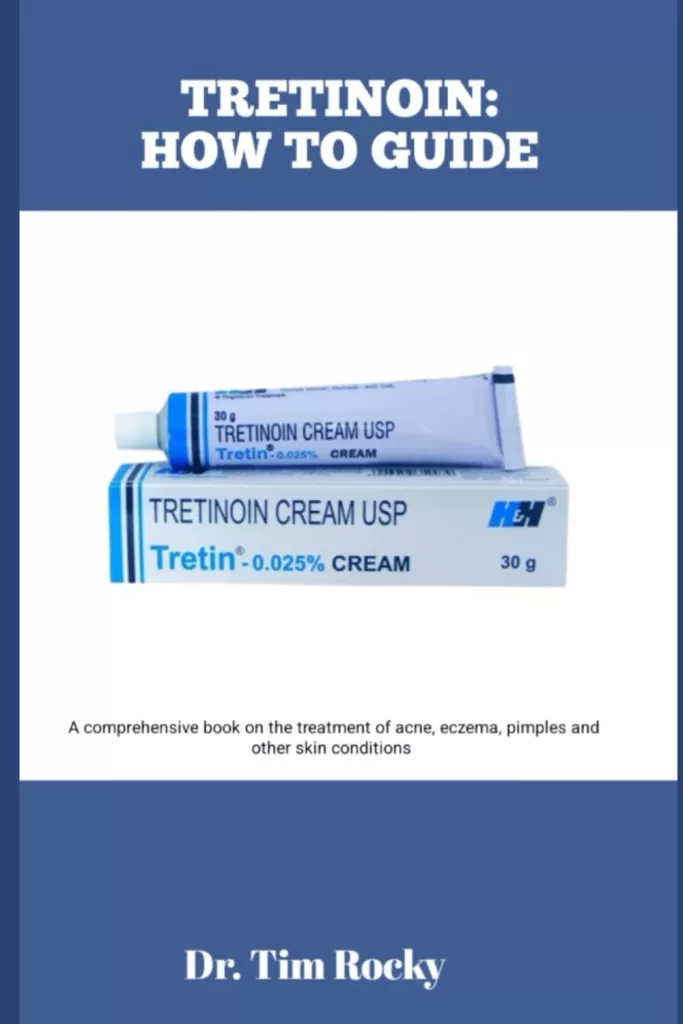
Tretinoin routine
Understanding the Challenges of Tretinoin Use
Tretinoin works by increasing cell turnover, which can lead to initial irritation, dryness, and peeling. These side effects are more pronounced in individuals with naturally dry or sensitive skin. Adjusting your skincare routine to accommodate these changes is crucial for achieving the desired results without compromising skin health.
Understanding Tretinoin Concentrations and Their Uses
Tretinoin, a popular skincare ingredient, is available in varying concentrations to cater to different skin needs. Here’s a breakdown of these concentrations and their typical applications:
- 0.025% Concentration
This is the gentlest form of tretinoin. It’s commonly recommended for individuals looking to improve overall skin texture or manage mild acne. If you’re new to tretinoin, this is a good starting point to allow your skin to adjust gradually. - 0.05% Concentration
Often used in anti-aging regimens, the 0.05% concentration is favored for its effectiveness in smoothing fine lines and wrinkles. It’s a middle-ground option for those looking to tackle visible signs of aging without jumping to the strongest concentration. - 0.1% Concentration
As the most potent version, 0.1% tretinoin is advised for experienced users, especially those dealing with severe acne, melasma, or deep wrinkles. Due to its strength, it’s crucial to use this concentration under the guidance of a healthcare professional to avoid irritation.
Choosing the right concentration depends on your skin’s tolerance and the level of treatment required. Consulting a healthcare provider can ensure you select the optimal strength for your specific skin concerns.
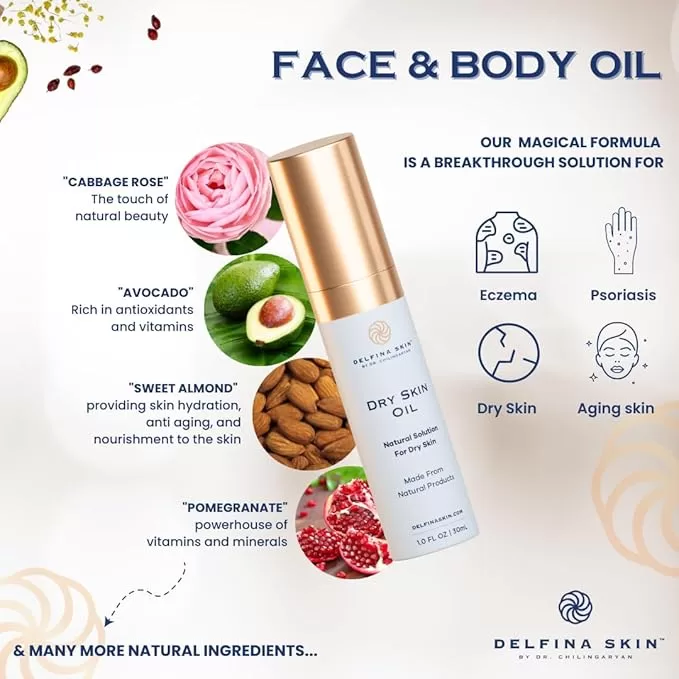
Delfina Dry Skin Oil – Eczema Psoriasis Treatment for Skin | Fast Absorbing and More Effective than Lotion for Extremely Dry Cracked Irritated Skin | Safe for All Ages
Understanding the Tretinoin Purge: What It Is and Why It Happens
When you start using tretinoin, a common skin treatment, you might encounter a phase known as the “purge.” But what exactly is this?
What is the Tretinoin Purge?
The purge is a temporary phase where your skin may experience increased breakouts. This can be alarming, especially if you’re using tretinoin to clear your skin or reduce signs of aging. However, this reaction is actually a sign that the treatment is taking effect.
Why Does It Happen?
- Accelerated Cell Turnover: Tretinoin speeds up the rate at which your skin cells renew. This rapid turnover pushes impurities, such as dirt and bacteria, to the surface more quickly than usual.
- Exposure of Latent Impurities: With this process, lingering acne-causing agents come to light. Consequently, you might notice an uptick in blemishes and inflammation, even if your initial use of tretinoin wasn’t to combat acne itself.
- Adjustment Period: Your skin is adjusting. The purge is essentially your skin learning to repair and rejuvenate itself with the aid of tretinoin. This adjustment is crucial for achieving the long-term benefits, such as smoother texture and reduced lines.
Embracing the purge can be challenging, but it’s often a positive indication that your skin is adapting and gearing up for improvement. Patience and consistency are key during this transition phase.
Building an Effective Skincare: Tretinoin routine
Nighttime Routine
- Gentle Cleanser:
- Recommended Product: CeraVe Hydrating Cleanser – This non-foaming cleanser removes impurities without stripping the skin of its natural moisture.
- Calming Serum (optional):
- Recommended Product: La Roche-Posay Hyalu B5 Serum – Contains hyaluronic acid and vitamin B5 to soothe and hydrate the skin.
- Moisturizer:
- Recommended Product: Vanicream Moisturizing Cream – Free of common irritants, this rich cream helps to maintain the skin’s moisture barrier.
- Tretinoin Application:
- Apply tretinoin (0.025% gel) sparingly and allow it to absorb fully. Consider mixing it with your moisturizer to buffer its potency.
- Spot Treatment (as needed):
- Recommended Product: Mario Badescu Drying Lotion – A sulfur-based spot treatment to address active breakouts without excessive dryness.
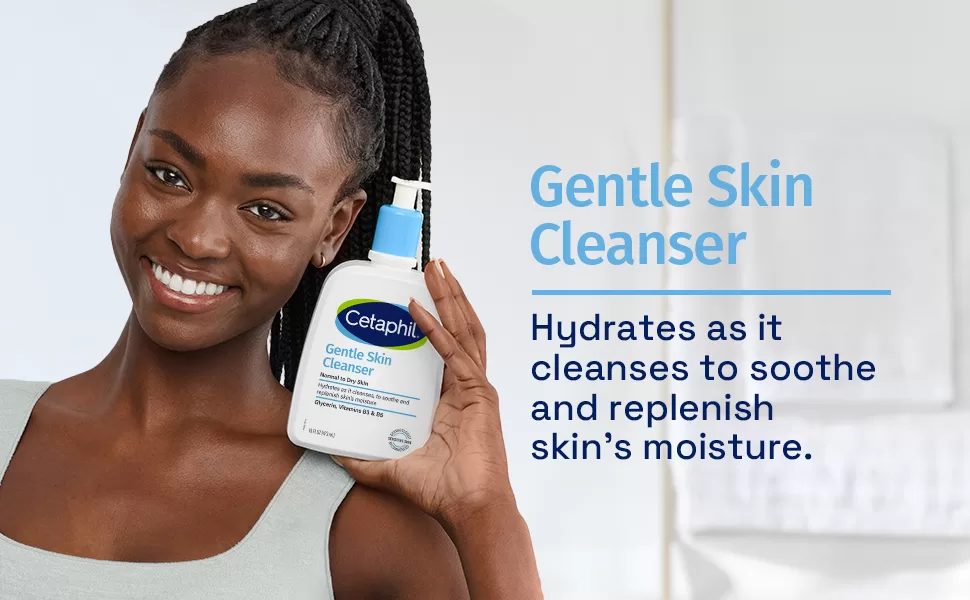
Daytime Routine
- Gentle Cleanser:
- Use the same cleanser as in your nighttime routine.
- Hydrating Serum:
- Recommended Product: The Ordinary Hyaluronic Acid 2% + B5 – Provides deep hydration and supports the skin barrier.
- Soothing Mist (if red or irritated):
- Recommended Product: Tower 28 SOS Daily Rescue Facial Spray – Contains hypochlorous acid to calm inflammation and redness.
- Moisturizer:
- Recommended Product: Neutrogena Hydro Boost Gel-Cream – A lightweight, oil-free moisturizer with hyaluronic acid for added hydration.
- Sunscreen:
- Recommended Product: EltaMD UV Clear Broad-Spectrum SPF 46 – Provides sun protection without clogging pores, also contains niacinamide for additional soothing.
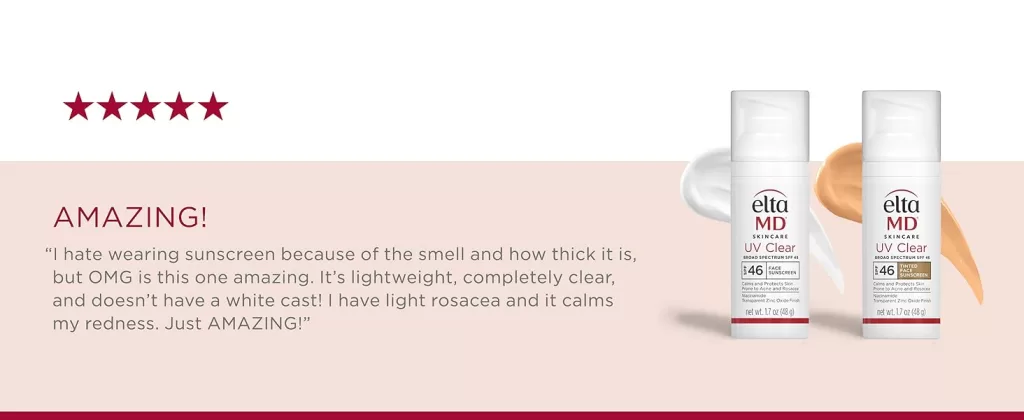
Additional Tips for Managing Dryness and Irritation
- Switch to a Cream Formulation:
- If your skin remains excessively dry, consult your dermatologist about switching to a cream-based tretinoin, which may be less irritating than the gel form.
- Limit Other Actives:
- Consider pausing or reducing the use of other active ingredients (e.g., benzoyl peroxide, acids) while your skin adjusts to tretinoin. Focus on hydrating and soothing products.
- Introduce New Products Slowly:
- When incorporating new products, do so gradually to monitor how your skin reacts and avoid overwhelming it.
- Hydration and Barrier Support:
- Use products rich in ceramides, hyaluronic acid, and other barrier-supporting ingredients to maintain skin hydration and resilience.
- Avoid Known Irritants:
- Since you’ve experienced irritation with azelaic acid, vitamin C, and certain acids, avoid these ingredients to prevent further sensitivity.
How to Reduce the Intensity of the Tretinoin Purge and Minimize Sensitivity
Navigating the tretinoin purge can be challenging, but with the right approach, you can alleviate some discomfort and redness.
Start Slowly
To ease into the process, begin by applying tretinoin sparingly. Consider using it every other night or just a couple of times a week. This gradual introduction helps your skin adjust without overwhelming it.
Use Minimal Amounts
When applying tretinoin, a little goes a long way. Always stick to a pea-sized amount to cover your entire face. This minimizes potential irritation while still providing benefits.
Incorporate Soothing Ingredients
Adding certain soothing ingredients to your skincare routine can help calm irritation. Niacinamide, for instance, is particularly effective. It not only soothes the skin but also enhances the benefits of skincare products without added irritation.
Moisturize Generously
Keeping your skin well-hydrated is crucial. Opt for a gentle, non-comedogenic moisturizer that locks in moisture without clogging your pores. Apply it after tretinoin to create a protective barrier.
Monitor and Adjust
Pay close attention to how your skin reacts. If you notice excessive redness or peeling, reduce the frequency of tretinoin application. Every skin type is different, and slight adjustments can make a significant difference.
Avoid Harsh Products
Steer clear of any other products that might irritate your skin further, such as exfoliants or alcohol-based toners. Focusing on gentle, nourishing products will create a more favorable environment for your skin to adapt to tretinoin.
By adopting these strategies, you can lower the intensity of the purge and maintain healthier, more resilient skin throughout your tretinoin journey.
Skincare Products to Pair with Tretinoin and Ingredients to Avoid
Incorporating tretinoin into your skincare regimen can transform your skin, but it’s essential to pair it with the right products to maximize benefits and minimize irritation. Let’s delve into the types of products you should reach for and the ingredients to steer clear of for a smooth transition.
Cleansers
What to Use:
Choose a gentle cleanser that effectively removes impurities without stripping natural oils. Look for formulations that are sulfate-free and mild, ensuring hydration and comfort for your delicate skin barrier.
What to Avoid:
Avoid products containing harsh sulfates, perfumes, and alcohol, which can cause excessive dryness and further irritation.
Toners
What to Use:
Opt for a hydrating and alcohol-free toner. These products can help replenish moisture and prepare your skin for the next steps in your routine.
What to Avoid:
Steer clear of acid-based toners, such as those with glycolic or salicylic acid, as they can exacerbate sensitivity when used with tretinoin.
Serums
What to Use:
Select serums that enhance hydration and support skin health. Niacinamide is an excellent choice for calming irritated skin and reinforcing the skin barrier, while hydrating serums help maintain moisture levels.
What to Avoid:
Avoid potent actives and densely packed serum cocktails initially, as they might overstimulate your skin while it’s adjusting to tretinoin.
Moisturizers
What to Use:
Rich, emollient moisturizers are vital for counteracting tretinoin’s potential dryness. Choose a product that aligns with your skin type—whether it’s an ultra-hydrating formulation for dry skin or a lighter one for oilier complexions.
What to Avoid:
Stay away from moisturizers with synthetic fragrances and potential irritants that can provoke your skin.
Sunscreens
What to Use:
Physical, mineral-based sunscreens are ideal, offering an effective shield against UV rays. Daily sun protection is crucial as tretinoin increases your skin’s sensitivity to sunlight.
What to Avoid:
Avoid chemical sunscreens with harsh ingredients if your skin becomes irritated easily, opting instead for clean, gentle formulations.
By carefully selecting the right products and being mindful of the ingredients to exclude from your routine, your skin will be better equipped to handle the transformative effects of tretinoin while minimizing discomfort and adverse reactions.
Recommended Products for Sensitive Tretinoin routine

- Cleansers:
- CeraVe Hydrating Cleanser: A gentle, hydrating cleanser.
- La Roche-Posay Toleriane Hydrating Gentle Cleanser: Ideal for sensitive skin.
- Moisturizers:
- Vanicream Moisturizing Cream: Rich and free from common irritants.
- Neutrogena Hydro Boost Gel-Cream: Lightweight with hyaluronic acid.
- Serums:
- The Ordinary Hyaluronic Acid 2% + B5: Hydrating and soothing.
- La Roche-Posay Hyalu B5 Serum: Calms and hydrates the skin.
- Spot Treatments:
- Mario Badescu Drying Lotion: Effective for targeting acne spots without excessive dryness.
- Sunscreens:
- EltaMD UV Clear Broad-Spectrum SPF 46: Protects and soothes the skin.

By adjusting your skincare routine and incorporating gentle, hydrating products, you can effectively manage dryness and peeling associated with tretinoin use. Consistency and patience are key as your skin adapts to this potent treatment, ensuring clear and healthy skin in the long term.
FAQ: Tretinoin routine
Q: What are the common side effects of using tretinoin, especially for dry and sensitive skin?
A: Common side effects of tretinoin include dryness, peeling, redness, and irritation. These side effects are more pronounced in individuals with naturally dry or sensitive skin.
Q: How can I minimize dryness and irritation caused by tretinoin?
A: To minimize dryness and irritation, consider the following:
- Gentle Cleansing: Use a gentle, fragrance-free cleanser to avoid stripping your skin’s natural oils.
- Hydration: Apply a hydrating serum and moisturizer to lock in moisture.
- Sunscreen: Always wear broad-spectrum sunscreen to protect your skin from UV damage, which can exacerbate dryness.
- Spot Treatment: Use a gentle spot treatment to address breakouts without causing further irritation.
- Patience: It may take several weeks for your skin to adjust to tretinoin.
Q: Can I use other active ingredients with tretinoin?
A: It’s generally recommended to avoid using other harsh active ingredients, such as benzoyl peroxide or strong acids, while using tretinoin, as they can increase irritation. However, you can consult with a dermatologist to determine the best approach for your specific skin concerns.
Q: What are some recommended products for dry and sensitive skin using tretinoin?
A: Here are some product recommendations:
- Cleansers: CeraVe Hydrating Cleanser, La Roche-Posay Toleriane Hydrating Gentle Cleanser
- Moisturizers: Vanicream Moisturizing Cream, Neutrogena Hydro Boost Gel-Cream
- Serums: The Ordinary Hyaluronic Acid 2% + B5, La Roche-Posay Hyalu B5 Serum
- Spot Treatments: Mario Badescu Drying Lotion
- Sunscreen: EltaMD UV Clear Broad-Spectrum SPF 46
Q: How often should I apply tretinoin?
A: Your dermatologist will determine the appropriate frequency and strength of tretinoin for your specific needs. Generally, it’s recommended to start with a lower strength and gradually increase it as your skin tolerates it.
Q: When will I see results from using tretinoin?
A: It may take several weeks or even months to see significant results from tretinoin. Be patient and consistent with your skincare routine.
Remember, it’s important to consult with a dermatologist to create a personalized skincare routine that addresses your specific needs and concerns.
Explore more articles like this @ Where And How Resources

